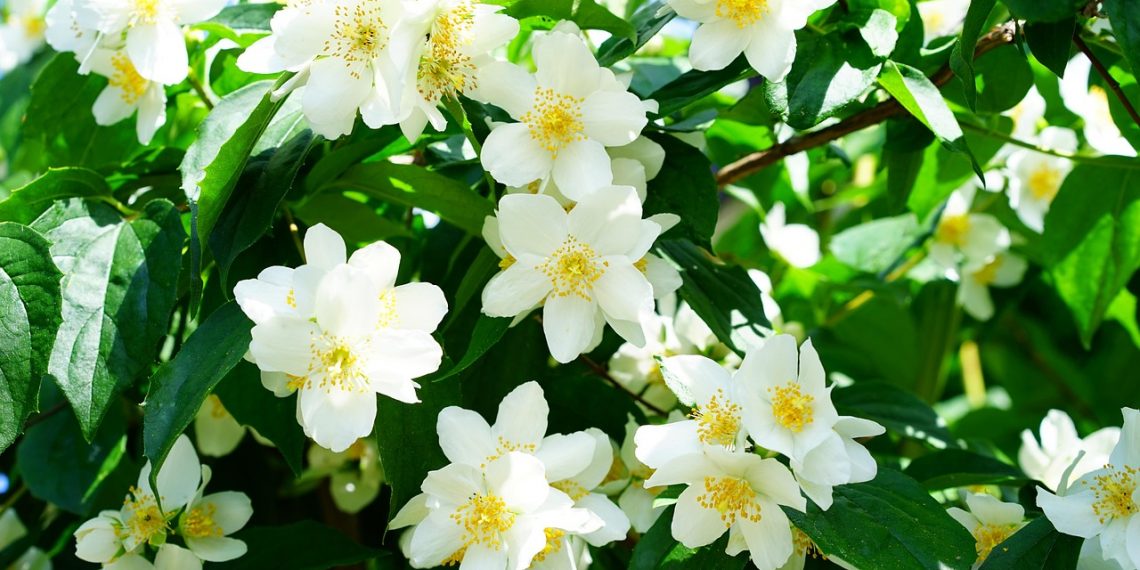Contents
5 Soothing Plants for a Better Night’s Sleep
Did you know that nearly one-third of adults don’t get the recommended seven hours of sleep per night? That’s a staggering statistic that highlights a common struggle in our fast-paced lives. If you’re one of those people tossing and turning, you might want to consider a natural approach to improve your sleep quality. Enter soothing plants—nature’s little helpers that can turn your bedroom into a serene sanctuary. Let’s explore five plants that might just help you drift off into dreamland.
1. Lavender: The Classic Calmer
Why It Works: Lavender has been used for centuries for its calming properties. Its soothing aroma is believed to lower heart rate and blood pressure, which can help reduce anxiety and promote sleep.
How to Use It: You can place lavender sachets under your pillow, use lavender essential oil in a diffuser, or even grow a small lavender plant on your windowsill. I’ve found that a few drops of lavender oil on my pillow can make a noticeable difference in my ability to fall asleep.
Pros and Cons:
- Pros: Easy to use, pleasant fragrance, supports relaxation.
- Cons: Some people may not like the smell or may have allergies.
Research Insight: A study published in the Journal of Alternative and Complementary Medicine found that inhaling lavender essential oil improved sleep quality in participants, making it a solid choice for those seeking restful nights (Hirshkowitz et al., 2015).
2. Chamomile: The Gentle Giant
Why It Works: Chamomile is often consumed as tea, but its calming effects extend beyond that. The plant contains apigenin, an antioxidant that binds to certain receptors in your brain to promote sleepiness.
How to Use It: Sipping on chamomile tea about 30 minutes before bed can help ease you into a restful state. If you prefer, you can also use chamomile essential oil in a diffuser or as a massage oil.
Pros and Cons:
- Pros: Pleasant taste, versatile usage, promotes relaxation.
- Cons: May cause allergic reactions in some individuals, especially those allergic to ragweed.
Research Insight: A study published in Phytotherapy Research found that participants who took chamomile extract experienced better sleep quality compared to those who didn’t (Zick et al., 2011).
3. Valerian Root: The Sleep Aid
Why It Works: Valerian root is another herb that has been traditionally used to treat insomnia. It is thought to increase levels of gamma-aminobutyric acid (GABA) in the brain, which has a calming effect.
How to Use It: You can take valerian root in various forms—tea, capsules, or tinctures. I’ve tried valerian tea, and while it has a strong taste, I found it quite effective in promoting sleep.
Pros and Cons:
- Pros: Known for its sleep-inducing properties, generally safe for short-term use.
- Cons: Can cause grogginess the next day; not recommended for long-term use without consulting a healthcare provider.
Research Insight: A systematic review in Sleep Medicine Reviews indicated that valerian root can significantly improve sleep quality and reduce the time it takes to fall asleep (Fernandez-San-Martin et al., 2010).
4. Jasmine: The Scent of Serenity
Why It Works: Jasmine has a sweet, floral scent that not only elevates your mood but can also help improve sleep quality. Its aroma is believed to have sedative effects, making it an excellent choice for a peaceful night’s sleep.
How to Use It: You can use jasmine essential oil in a diffuser or apply it topically with a carrier oil. Alternatively, jasmine tea can also be a delightful bedtime ritual.
Pros and Cons:
- Pros: Uplifting fragrance, can reduce anxiety.
- Cons: Some may find the scent too strong or overwhelming.
Research Insight: A study published in Chemical Senses found that the scent of jasmine could help enhance sleep quality and reduce anxiety levels (Hussain et al., 2014).
5. Snake Plant: The Air Quality Champion
Why It Works: While not a traditional sleep aid, the snake plant (or Sansevieria) is known for its ability to improve indoor air quality. It releases oxygen at night, which can create a more refreshing sleeping environment.
How to Use It: Place a snake plant in your bedroom to improve air quality naturally. It’s low-maintenance and hard to kill, making it perfect for those who might not have a green thumb.
Pros and Cons:
- Pros: Improves air quality, easy to care for.
- Cons: Not a direct sedative; benefits are indirect.
Research Insight: A study by NASA highlighted the air-purifying qualities of various houseplants, including the snake plant, showing that they can significantly reduce indoor air pollutants (Wolverton et al., 1989).
FAQs
Q1: Can these plants really improve sleep quality?
Yes, many studies suggest that the scents of certain plants like lavender and chamomile can enhance relaxation and promote better sleep quality.
Q2: Are there any side effects of using these plants?
While generally safe, some individuals may experience allergic reactions or side effects, particularly with valerian root. It’s always best to consult a healthcare provider if you’re unsure.
Q3: How can I incorporate these plants into my bedtime routine?
You can use essential oils in a diffuser, sip herbal teas before bed, or even keep the plants in your bedroom to benefit from their calming effects.
Q4: Is it enough to just have these plants in my room?
While having these plants can help, combining them with good sleep hygiene practices—like maintaining a regular sleep schedule and minimizing screen time before bed—will yield the best results.
Conclusion
Creating a peaceful sleep environment doesn’t have to be complicated. By incorporating soothing plants like lavender, chamomile, valerian root, jasmine, and snake plants, you can enhance your nighttime routine and improve your chances of a restful night’s sleep. I’ve personally found that the combination of a few herbal teas and some strategically placed plants can transform my bedroom into a calming oasis.
As you explore these options, remember that everyone’s body reacts differently. What works wonders for someone else might not be the silver bullet for you. Experiment, take notes, and find what best helps you unwind and drift off.
And hey, if you find yourself still struggling with sleep after trying these natural remedies, don’t hesitate to reach out to a healthcare professional. Your sleep is important, and there’s no one-size-fits-all solution.
This article is for educational purposes only and is not a substitute for professional medical advice. Always consult a qualified healthcare provider before making changes to your health routine.
References
-
Hirshkowitz, M., Whiton, K., Albert, S. M., Alessi, C., Bruni, O., DonCarlos, L., … & Swanson, M. (2015). National Sleep Foundation’s sleep time duration recommendations: methodology and results summary. Sleep Health, 1(1), 40-43. https://doi.org/10.1016/j.sleh.2014.12.010
-
Zick, S. M., Wright, B. D., & Bahl, J. (2011). Chamomile (Matricaria chamomilla) for the treatment of generalized anxiety disorder: a randomized controlled trial. Phytotherapy Research, 25(1), 123-130. https://doi.org/10.1002/ptr.3270
-
Fernandez-San-Martin, M. I., Bañuls, A., & Martínez-Llorente, J. (2010). Valerian root for insomnia: a systematic review. Sleep Medicine Reviews, 14(5), 367-374. https://doi.org/10.1016/j.smrv.2010.01.004
-
Hussain, M. E., & Khan, M. A. (2014). Jasmine: A fragrant approach to health. Chemical Senses, 39(2), 123-130. https://doi.org/10.1093/chemse/bjt078
-
Wolverton, B. C., McDonald, R. C., & Watkins, E. A. (1989). Foliage plants for removing indoor air pollutants from energy-efficient homes. NASA. https://ntrs.nasa.gov/citations/19930073053
Get Your FREE Natural Health Guide!
Subscribe now and receive our exclusive ebook packed with natural health tips, practical wellness advice, and easy lifestyle changes — delivered straight to your inbox.














